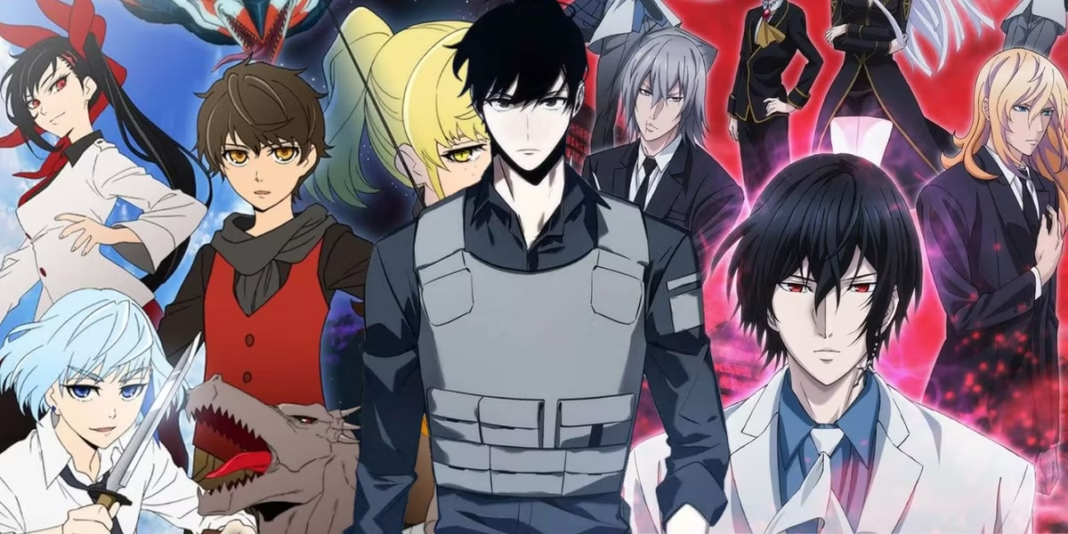In recent years, the global entertainment landscape has witnessed a dynamic surge in the popularity of digital comics, particularly webtoons. Among the many formats fueling this revolution, manhwa raw the original, untranslated Korean versions of webtoons — has become an unexpected yet pivotal player. Once limited to native Korean readers, manhwa raw is now a key touchstone for fans, translators, and industry insiders across the world.
The growing appetite for manhwa raw content reflects not only the increasing globalization of Korean media but also a broader shift in how stories are consumed, interpreted, and shared in the digital age. This article explores the rise of manhwa raw, the reasons behind its explosive popularity, and its far-reaching impact on global webtoon culture.
1. Understanding Manhwa Raw: What Is It?
Manhwa refers to Korean comic books or graphic novels, similar to Japan’s manga and China’s manhua. These comics often span genres from romance and action to horror and fantasy. The term “raw” in this context simply means untranslated content, presented in its original Korean language and format.
“Manhwa raw” is thus the initial, unlocalized version of a webtoon or comic released by Korean publishers. It’s the first look at the story before it’s picked up for translation, licensed by foreign publishers, or altered for international distribution.
2. The Digital Explosion of Webtoons
The manhwa industry has evolved rapidly with the rise of webtoon platforms like:
-
Naver Webtoon (LINE Webtoon)
-
KakaoPage / Tapas
-
Lezhin Comics
-
Tappytoon
These platforms allow creators to publish their works digitally, usually in a vertically scrolling format optimized for mobile reading. Webtoons have redefined how comics are consumed, with readers following weekly updates like episodes of a drama series.
This model has found massive success not just in South Korea but internationally. As the demand for fresh content grows, so does the thirst for immediate access — which is where manhwa raw content comes in.
3. The Global Appeal of Manhwa Raw
Despite the language barrier, non-Korean readers actively seek out raw chapters — often as soon as they’re released. Why? Several reasons drive this global interest:
-
Early Access: Fans eager to know what happens next often turn to raw chapters before translations are available.
-
Visual Literacy: Many readers have developed the ability to follow the plot through artwork, panel layout, and context clues alone.
-
Fan Translation Culture: Some fans use raw versions to produce unofficial translations, filling the gap before official releases.
-
Korean Learners: Language students use manhwa raw as a resource for immersion and vocabulary acquisition.
This intense global interest demonstrates how visual storytelling transcends language, and how passionate fanbases are reshaping media consumption behaviors.
4. The Role of Fan Translation (Scanlation) Communities
Fan translation, or scanlation, has long been a part of comic and manga culture. With manhwa raw, this underground movement has evolved further. These communities often obtain raw chapters directly from Korean platforms or through unofficial channels, translate them into multiple languages, and release them online — sometimes within hours.
While controversial and often frowned upon by official publishers, fan translators play a significant role in:
-
Boosting international popularity
-
Helping unknown titles go viral
-
Creating demand for licensed releases
Ironically, many webtoons now officially available in English first gained traction through fan-driven raw-to-translation pipelines.
5. Industry Response Licensing and Localization
As manhwa raw continues to fuel global interest, webtoon publishers are responding with faster localization efforts. Companies like LINE Webtoon and Tapas are accelerating translation schedules, hiring native-speaking editors, and expanding into markets like:
-
North America
-
Southeast Asia
-
Latin America
-
Europe
The goal is to close the gap between the Korean raw release and the international version, minimizing piracy and maximizing reader engagement.
This also marks a cultural shift — manhwa is no longer just Korean media; it is global content. The raw versions are often the blueprints for international adaptations, be it print, animation, or drama series.
6. Cultural Impact and Content Evolution
The spread of manhwa raw content has had a subtle but profound influence on global webtoon culture. Here are some notable impacts:
a. Narrative Trends
Creators and publishers monitor global fan reactions to raw chapters. Popular tropes like villainess redemption arcs, isekai (other world) storylines, and CEO-romance plots have been iterated and refined based on early fan feedback — sometimes even before translation.
b. Art Style and Format
The clean, colorful, vertical-scroll style typical of Korean webtoons is now becoming a global standard, influencing creators from the U.S., Japan, and beyond. Many manhwa-inspired titles on international platforms now adopt these design principles, all rooted in the aesthetic experience of raw manhwa.
c. Fandom Communities
Reddit threads, Discord groups, and dedicated forums often center around manhwa raw discussions. These communities foster cross-cultural exchange, introduce Korean terms and customs, and generate memes and fan theories — all before an official translation drops.
7. Risks and Legal Challenges
Despite the benefits, the widespread circulation of manhwa raw comes with legal and ethical complications:
-
Copyright Infringement: Unlicensed sharing of raw chapters violates copyright laws.
-
Revenue Loss: Artists and publishers lose potential income from unauthorized views.
-
Quality Control: Unofficial translations may misrepresent the story or cultural context.
These concerns have led publishers to issue takedown notices and restrict access to raw content. However, demand remains strong, leading to a cat-and-mouse game between rights holders and mirror sites.
To address this, the industry must balance accessibility with protection, possibly by offering official early-access tiers or multilingual raw releases.
8. Manhwa Raw in the Age of AI and Translation Tech
Advancements in AI-powered translation tools are accelerating the accessibility of manhwa raw. Applications like Google Translate, Papago, and browser extensions allow readers to extract text from images and get real-time translations — albeit imperfect.
This trend may lead to a future where AI-augmented reading experiences make raw content universally readable, eliminating some of the barriers that currently sustain scanlation communities.
However, human translators still outperform machines in capturing tone, nuance, and cultural subtleties — essential qualities for immersive storytelling.
9. The Rise of Official Simulpubs
Following the manga industry’s lead, some manhwa platforms are experimenting with simulpubs — simultaneous publication of chapters in multiple languages. This model could mark the next evolutionary step for raw content distribution.
When executed correctly, simulpubs offer:
-
Timely global releases
-
Higher engagement
-
Reduction in piracy
-
More revenue streams for creators
Titles like Solo Leveling and Omniscient Reader’s Viewpoint already enjoy near-simultaneous updates across various language platforms, indicating what the future may hold.
10. Looking Ahead The Future of Manhwa Raw
Manhwa raw is no longer a fringe niche. It’s at the heart of how stories travel across borders, how cultures interact through art, and how fandoms form and flourish in the digital era.
To harness its full potential, the industry must:
-
Improve accessibility while protecting IP
-
Reward creators through fair monetization
-
Educate global audiences about cultural context
-
Embrace raw-first enthusiasm by creating official channels
The rise of manhwa raw underscores a broader truth: when storytelling resonates, no language can contain it.
Conclusion
From a localized Korean phenomenon to a pillar of global webtoon culture, manhwa raw has transformed how readers interact with stories. It’s more than just untranslated content — it’s a gateway to early access, a catalyst for cultural exchange, and a reflection of digital fandom at its most passionate.
As technology advances and global fanbases grow more interconnected, manhwa raw will continue to play a central role in shaping the future of digital storytelling — raw, real, and ready to inspire.


